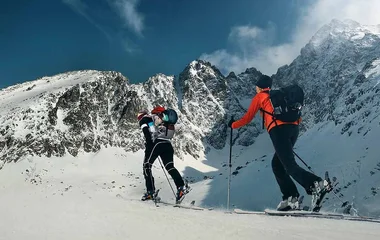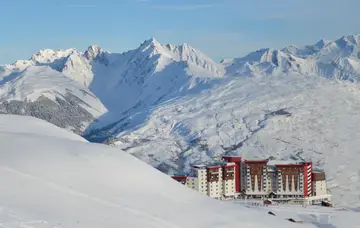There are a few things to bear in mind though – the first of which is safety. Glaciers, especially as they recede, are home to huge crevasses, many of which are highly dangerous – and scarily visible – during the summer. In autumn, winter and spring they can be hidden by fresh snow but they are still there.
“The ropes at the sides only really appear in Europe on glaciers – if the ropes are there, you don’t go under them. Even just off the side of the piste, there could be a crevasse – it’s simple, but you must obey the rules, no matter how tempting the snow looks”, says Rob.
Because of the high altitude, skiers and hikers must also pay attention to the harsh sun and snow glare, making sure they drink enough water and ensuring they don’t overdo it. Unlike the winter, when you may ski from 3,500m to the base of a ski area, during the summer you will likely ski all day above 3,000m and this will take its toll, so ensure you drink enough, apply an effective sunscreen (at least a SPF50 or total block sunscreen) and apply it regularly (every two hours maximum).
“And take time to acclimatise” adds Rob, “glacier skiing and hiking is physically tiring.”







